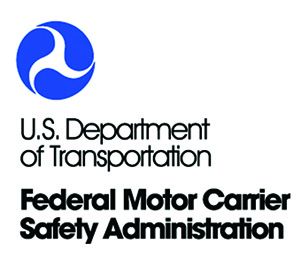Senior Reporter
FMCSA to Begin Crash Accountability Program to Aid Fleets’ Safety Scores

The Federal Motor Carrier Safety Administration has announced that it is beginning a two-year crash preventability demonstration program that will classify a crash as “not preventable” on a carrier’s Safety Measurement System profile in instances where the carrier is not at fault.
However, to have a crash deemed not preventable, the carrier must submit a request for data review through the agency’s DataQs system, attaching documentation that establishes the carrier could not have avoided the crash.
The crash demonstration program will begin accepting RDRs on Aug. 1 for crashes that occurred on or after June 1, the agency said.

The announcement follows an FMCSA Federal Register posting a year ago seeking public comment on an idea that has for years been sought by truckers, brokers and shippers.
Fatal crashes currently are listed on a carrier’s safety profile but do not contain information on whether the carrier was at fault in the crash. Under the demonstration program, if a crash is found to be not preventable, a carrier’s private Crash Indicator Behavioral Analysis Safety Improvement Category, or BASIC, score will be recalculated with the crash omitted.
“Stakeholders have expressed concern that the Crash Indicator BASIC may not identify the highest-risk motor carriers for interventions and that the listing of crashes on the public website, without an indication of preventability, can give an inaccurate impression about the risk posed by the company,” FMCSA said. “The data gathered through the demonstration program will allow the agency to better evaluate the utility of making crash preventability determinations.”
To be considered for a “not preventable” rating, a crash must have resulted in a fatality, bodily injuries requiring immediate medical treatment away from the scene of the crash or a vehicle being towed from the scene of a crash.
There are eight types of crashes that would be automatically eligible for a review. They include a crash in which a commercial motor vehicle is struck by a motorist driving under the influence, struck by a motorist driving in the wrong direction, struck in the rear, and the CMV being struck when it was legally stopped or parked.
Other crashes that can be reviewed include those in which an individual attempts to commit suicide by stepping or driving in front of a CMV, a crash that damages a CMV after striking an animal in the roadway, a crash in which a CMV is struck by infrastructure such as falling trees or rocks and instances in which a vehicle is struck by cargo or equipment from another vehicle.
The agency’s initial posting in July 2016 suggested that RDRs should include all available law enforcement reports and insurance reports from all parties involved in a crash.
After receiving comments, FMCSA said it will not require someone submitting a crash preventability RDR to include specific documentation from third parties, such as insurance companies, but it will be incumbent on the submitter to provide sufficient documentation that a crash was not preventable.
“The agency will consider all relevant evidence submitted,” FMCSA said in its July 27 Federal Register post. “The burden is on the submitter to show by compelling evidence that the crash was not preventable.”
The agency said it will use “contract resources” to complete the review.
In a briefing statement, American Trucking Associations said possible evidence could include, but is not limited to, crash reports; police accident reports; insurance documents; pictures; videos; media reports; affidavits; or transcripts.
The controversy over the crash-fault issue goes back several years, and the new demonstration program represents somewhat of a concession by FMCSA.
Despite longtime pressure from the trucking industry, FMCSA concluded in a study made public in January 2015 that it did not have a foolproof path to follow for quickly assessing fault in crashes and then using those judgments to predict future risk among trucking companies.
At the time, the agency said it examined nearly 11,000 police reports on accidents involving trucks and buses, and found discrepancies among the reports and no clear way to use fault assessment to produce a superior model for predicting future crashes as part of the CSA program.
Originally, the agency was planning in 2012 to implement a much-anticipated CSA program process that would have allowed carriers to seek an accountability review of crashes that went on their safety records.
However, in March 2012, then-FMCSA Administrator Anne Ferro announced that the agency would delay “until further notice” its plans to use police accident reports as the basis for fault determination.
At the time, Ferro said the agency and then-Transportation Secretary Ray LaHood had received feedback from a few public interest groups raising questions about the “reliability” of police accident reports as the primary basis for the crash accountability determination process.




